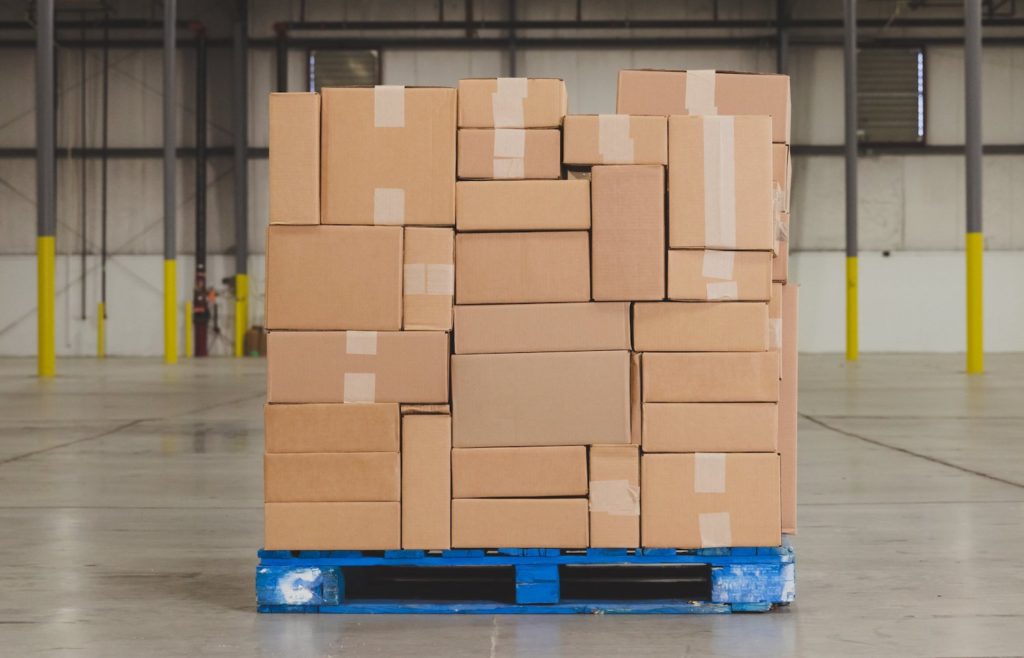
Deliver On Time and In Full with Predictive Analytics for Supply Chains
What’s in Your Blind Spot?
Managing upstream vendors and downstream customers demands data. It’s not always easy to know who is doing what and when. For many organizations, the biggest blind spot isn’t within the manufacturing process but in the logistics. It’s relatively easy to know when products are loaded onto a truck and when they are delivered to their final destination. What happens to that freight between those two points is often a mystery and that’s precisely what can prevent on-time and in-full (OTIF) shipments. It takes data and upfront planning to mitigate in-transit risks, but many organizations wait until a problem occurs before they set any plans into motion.
The risk of the unknown is what often keeps shippers and third-party logistics providers up at night. According to the Finance Train, there are three types of risk that can be measured in the risk management process: the known knowns; the unknown knowns; and the unknown unknowns. The goal is to move as many of the unknown unknowns into the other categories because what you don’t know can hurt you.
GPS and Geolocation Don’t Go Far Enough
Many companies now employ technology to keep tabs on their shipments by the truckload. GPS and geolocation give real-time location data so at least companies can know where their goods are at any given time. Much like consumers can track their orders on Amazon and UPS, they see where their shipment is, but there is no way to know if something will delay that shipment or cause it to not be delivered on time.
Here’s where all of the GPS and similar technologies fail. They provide the location of the package but no contextual data as to whether it will make it to its destination or what risks are present. It’s the dreaded unknown unknown. The contextual data can be weather events, natural disasters, infrastructure outages, and even social events like rallies and protests – all of which can have a significant impact on the quality of the freight and the timing of the delivery.
The key to OTIF is prior planning. With the right data and predictive modelling, companies can anticipate much of that contextual data ahead of time, up to two weeks before a shipment is scheduled. This gives companies more time to plan for alternate routes, modes of transportation, and/or schedules. Instead of being in a reactive mode when a weather event threatens to delay or halt a shipment, the company can be proactive in managing their fleet and customer expectations to meet OTIF requirements.
Reputations and Revenue Are at Stake with OTIF
For stakeholders in the supply chain, the uncertainty of whether a product will be delivered on time is a liability; money and reputations are on the line. The supply chain can come to a screeching halt if a part or product isn’t delivered on time and in full.
Related: What about Upstream? Assessing Your Supplier Risk
The notion of OTIF has taken on a life of its own. Broken on-time and in-full shipment commitments often carry penalties. WalMart is considered a pioneer in OTIF because, as the retail giant says, “On-shelf availability is a huge metric that WalMart monitors on both a corporate- and store-level.” Further, WalMart estimates that “In-Full performance was worth $1.7B in lost sales in 2019. That’s $1.7 BILLION dollars in lost sales, due to suppliers not delivering in-full on their orders.”
Most recently, WalMart has separated in-full from on-time so each metric can be monitored and fined separately. They realize it’s still a liability if an order is received on time but not in full or vice versa. On-time expectations are broken out by the suppliers’ freight terms but have no more than a two-day tolerance. The fine for deficiency in service is directly related to the value of that shipment. The more a supplier ships, the faster those penalties can quickly eat into profit.
The Cone of Uncertainty
There’s a cone of uncertainty when it comes to logistics. Shipping isn’t unlike a hurricane forecast. When a hurricane forms, the forecast is less accurate the further out the storm is. It’s not too difficult to predict where the storm will go today and tomorrow. Without the proper predictive models, forecasters have no idea what will happen on day three or four, much less a week out.
This is where many companies are without supply chain predictive analytics to bring them visibility into their planned shipments days, even a week or more out. Because they have predictive data in their hands so early, they can plan and have confidence that not only their shipment left the dock, but it will arrive on time. There’s plenty that can happen to that shipment between pick-up and delivery, but if the shipper can’t see it and plan for it, they can only react when something happens.
Related: OTIF Programs: What You Need to Know to Nail On-Time In-Full Performance Metrics
Risk Scores Measure Likelihood and Severity
OTIF is possible with predictive analytics for supply chains. Companies have a much better probability to deliver on time and in full. Predictive analytics do more than just predict where a shipment will go and the likelihood of it being interrupted. The technology can make recommendations as to how a company can make changes at the individual shipment level to mitigate risk.
Supply chain predictive analytics has another impact on OTIF – the ability to measure the likelihood of risk events happening. This is a massive step forward from traditional analytics. Again, using the climate reference, it’s one thing to know there is snow in the forecast, but we prefer to know how likely that snow will occur in our area as soon as possible so we can plan.
Whether a company is looking upstream at its vendors or downstream at its customers in the supply chain, it’s highly beneficial to see actual data to back up a prediction. There may be a tropical storm predicted to hit the Gulf Coast, but you can’t make an informed decision until you see just how likely that will have an impact on your shipment – and to do that, you must know when and where that storm is predicted to make landfall, where it will travel inland, where your shipment will be at that time, and if the severity of the storm could interrupt the shipment or damage the freight. Minute details like these can be predicted with measured certainty, in real-time and up to two weeks out. That gives companies time to make alternate plans and if needed, time to set proper expectations with your supply chain.
On-time and in-full deliveries don’t have to cause stress. Yes, the pressure will always be there because you recognize risks are everywhere. However, you can deliver OTIF when you have supply chain predictive analytics giving you the foresight to plan ahead and make adjustments to mitigate those risks.



